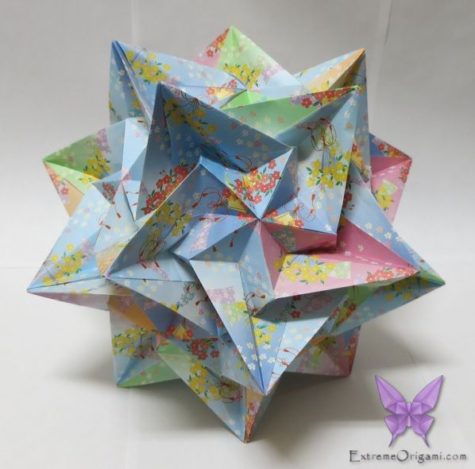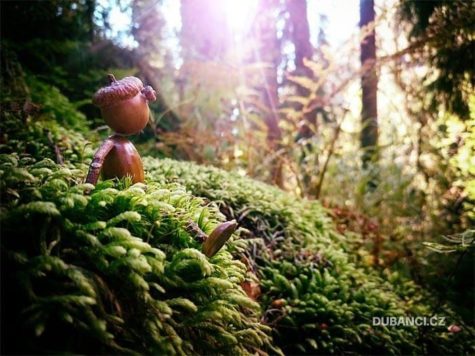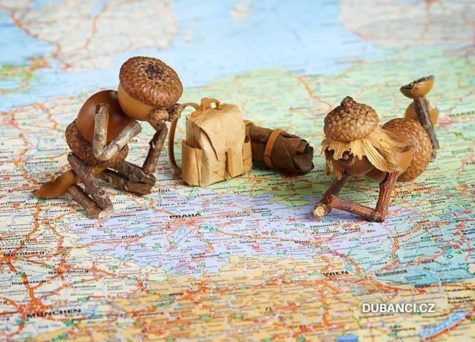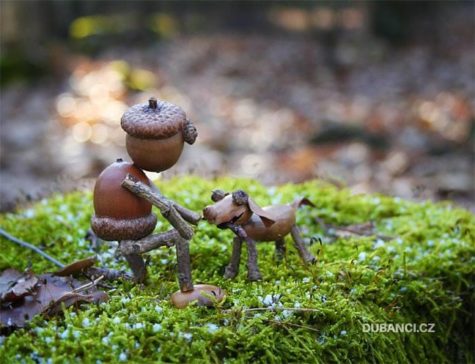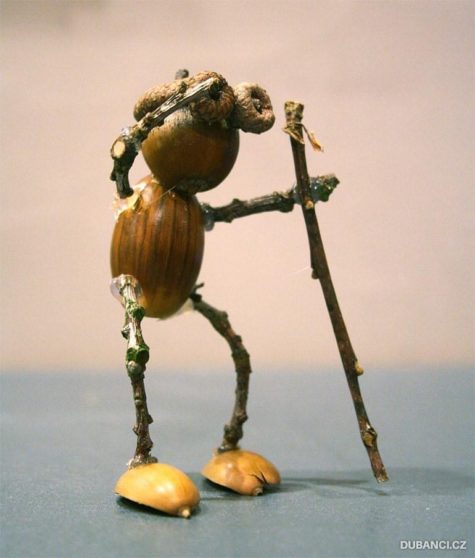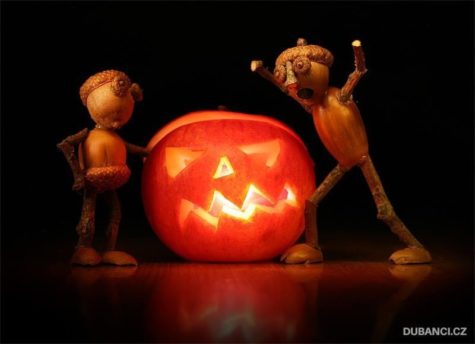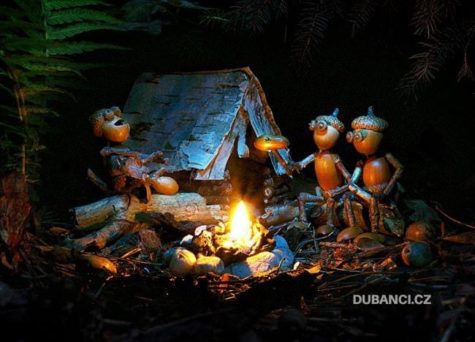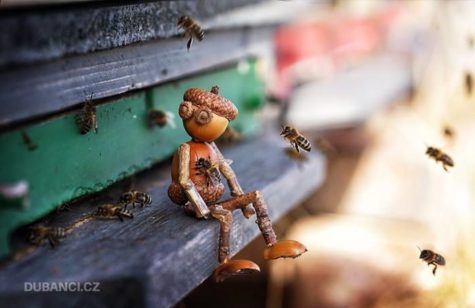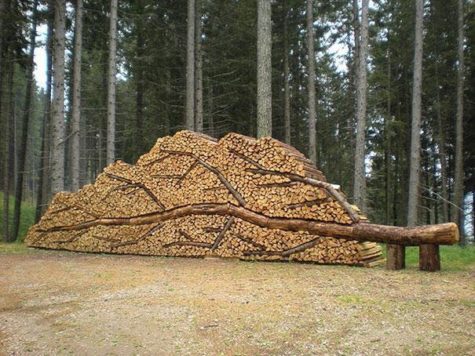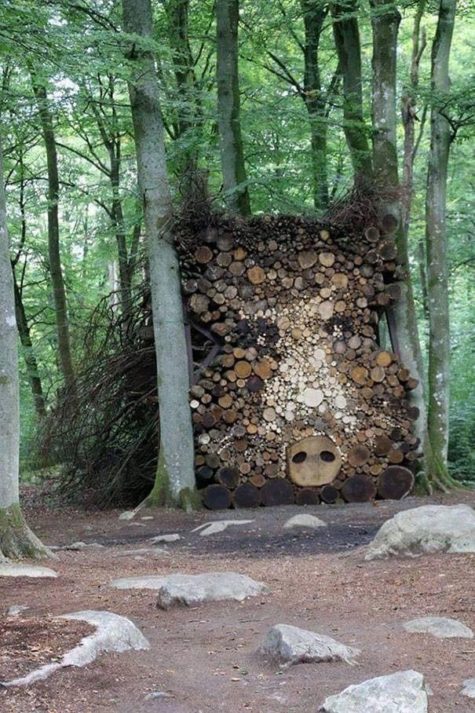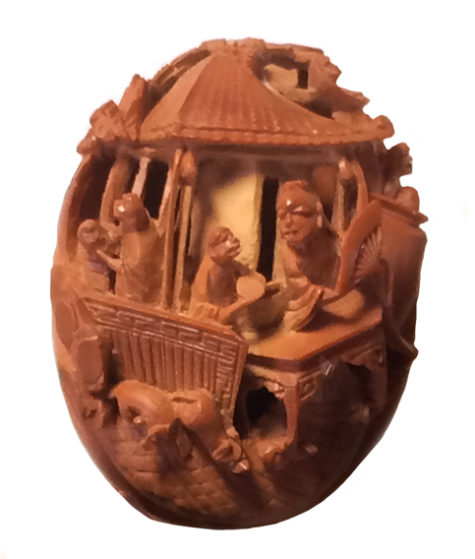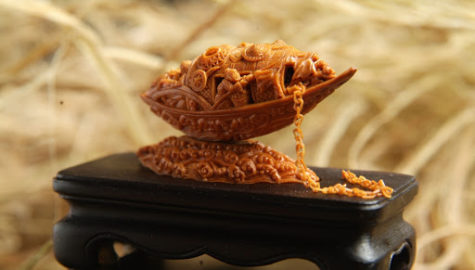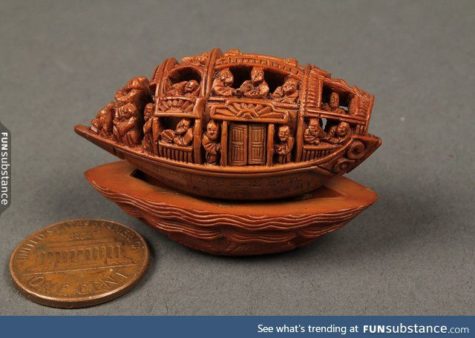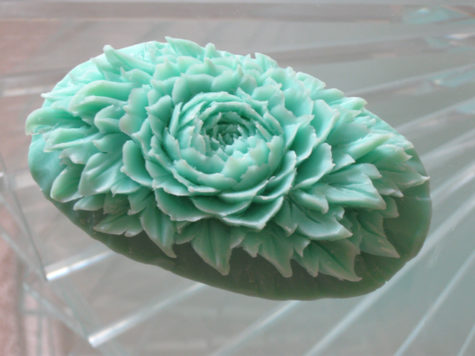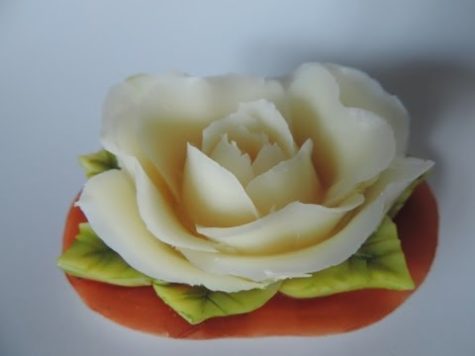Unusual Sculptures
Medicine Ball Origami
Kusudama Origami originates from ancient Japanese culture, where they were used for incense and potpourri; possibly originally being actual bunches of flowers or herbs. The word itself is a combination of two Japanese words kusuri, Medicine, and tama, Ball. They are now typically used as decorations, or as gifts.
Hanging Out and Having Fun
More Cute Acorn Characters
Whimsical Stone Worshipers

Otagi Nenbutsu-Ji is a Buddhist temple in Kyoto, Japan that features over 1,200 stone figures representing Rakan, or disciples of Shaka (the founder of Buddhism), that were mostly carved by amateurs from across the country under the guidance of sculptor Kocho Nishimura. Each sculpture is a whimsical display of expressive faces, adding a playful element to the spiritual environment.
The figurative sculptures were first donated in 1981, only a little over 30 years ago, allowing the present temple, a reconstruction of its former self which was originally built in the middle of the eighth century, to become known for its humorous figures. Now the smiling faces and expressive gestures still manage to translate through the moss that covers them. Even during winter, when snow coats the small, stone bodies, one can make out the playfully spirited figures.
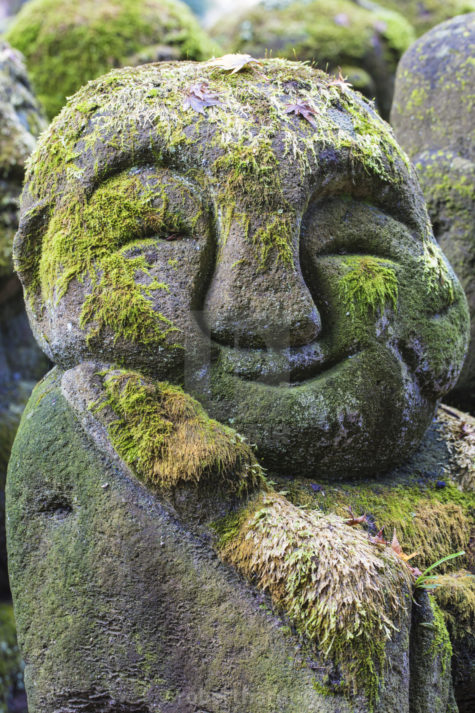



















Info source: My Modern Met
Yummy Edible Sculptures
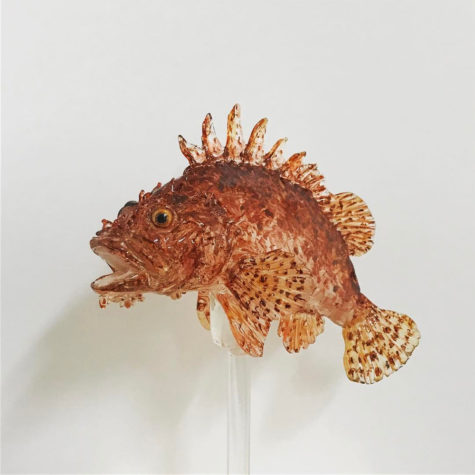
Goldfish and octopuses that look like glass, tiny real looking pandas, shiba inu dogs, rabbits, dragons, and snakes… all edible. In the art of Amezaiku, artisans craft small candy lollipop sculptures.

During the Heian period, the art of amezaiku was imported from China and was probably first used in Japan for candy offerings made at temples in Kyoto.
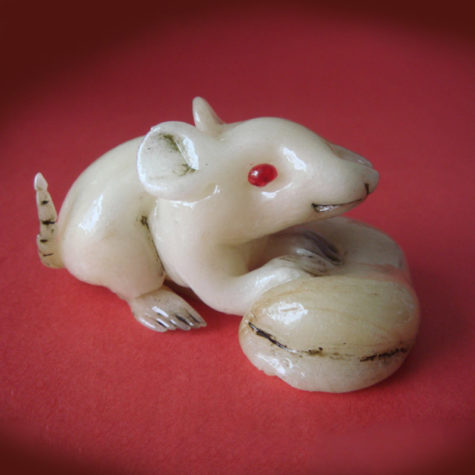
The amezaiku craft spread beyond the temple during the Edo period, when many forms of street performance flourished in Japan and when its base ingredient, mizuame, became widely available. In Edo it emerged in its present artistic form.

Amezaiku artists also paint their sculpted candy with edible dyes to give the finished work more character.


Animals and insects are common amezaiku shapes created to appeal to children.


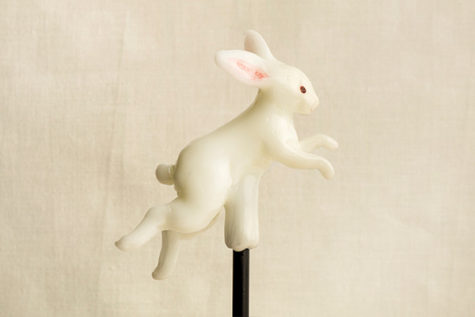

Intricate animal characters are created with expert speed. The realism is amazing!






Some amezaiku artists are also street performers who perform magic tricks and tell stories along with their candy craft entertainment.

Acorn Characters
Unusual Structures
Woodpile Creativity
Peach Pit Carvings
Cool Art Soaps
VO: IMG_0608
shirleytwofeathers: flip-flop-hooks
shirleytwofeathers: flip-flop-hooks
shirleytwofeathers: flip-flop-hooks
Lee Ann Michener: flip-flop-hooks



